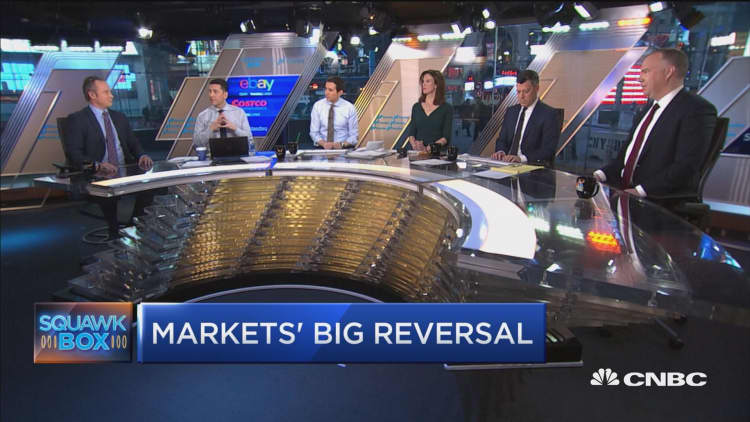
The sudden reintroduction of volatility to the stock market likely will help hedge funds, which are coming off their best start to the year in more than a decade.
As equities started out on fire so did hedge funds, which rose 2.8 percent in January as measured by the HFRI Fund Weighted Composite Index. The performance was the best first month for the industry since 2006 and the top month overall since December 2010.
Despite the powerful month, the $3.2 trillion industry still underperformed basic stock market indexes. The posted a total return of 5.7 percent as the market roared out of the gate before suffering a rough start to February.
The performance came as volatility in "global equities, currencies (including cryptocurrencies), commodities, fixed income and the outlook for global inflation all increased," HFR President Kenneth J. Heinz said in a statement.
"Hedge funds will continue to navigate these volatile markets and asset classes in 2018, monetizing opportunities generated by US tax cuts and infrastructure spending, US monetary policy, and corporate M&A and special situations," he added. "These themes are likely to drive performance and industry growth in 2018."
Volatility is generally seen as a plus for stock picking as it provides better opportunities for active managers to find price discrepancies. Low-vol environments usually correspond with high correlations in that most stocks move up and down together.
Indeed, active managers as a whole saw a stellar January as compared with historical norms.
Large-cap managers beat their benchmarks at a 69 percent pace, with the average outperformance at 0.53 percentage points. That was the best month in six years and the second-best overall since Bank of America Merrill Lynch started tracking beat rates in 2009.
"Sector positioning was likely a big driver of performance: funds' two most overweighted sectors (Tech and Discretionary) were the best-performing sectors in January, and their four most underweighted sectors (Staples, Telecom, Real Estate and Utilities) posted the worst performance, as rising rates pressured high dividend yield," Savita Subramanian, BofAML equity and quant strategist, said in a recent report for clients.
Subramanian also pointed out that correlations had reached a 17-year low, contributing to performance, while companies with the most positive earnings revisions also performed well.
For hedge funds in particular, macro strategies, which focus on economic and political themes, posted the best January return at 3.7 percent. Equity-focused also turned in a solid performance with a 3 percent gain.
After seeing enormous gains in 2017, funds focused on digital currencies and the technology behind them faltered in January as prices plunged.
The HFR Blockchain Composite Index was off 9.22 percent for the month after gaining 2,798 percent in 2017, while the HFR Cryptocurrency Index fell by the same level after surging 2,922 percent in the previous year.


